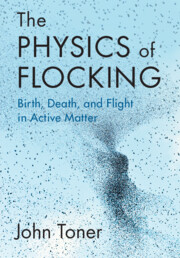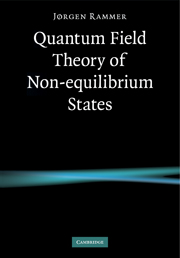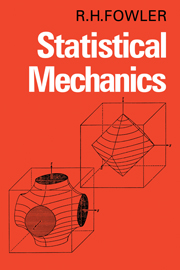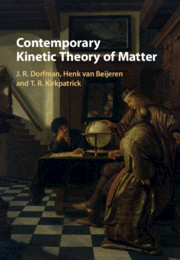The Physics of Flocking
In creatures ranging from birds to fish to wildebeest, we observe the collective and coherent motion of large numbers of organisms, known as 'flocking.' John Toner, one of the founders of the field of active matter, uses the hydrodynamic theory of flocking to explain why a crowd of people can all walk, but not point, in the same direction. Assuming a basic undergraduate-level understanding of statistical mechanics, the text introduces readers to dry active matter and describes the current status of this rapidly developing field. Through the application of powerful techniques from theoretical condensed matter physics, such as hydrodynamic theories, the gradient expansion, and the renormalization group, readers are given the knowledge and tools to explore and understand this exciting field of research. This book will be valuable to graduate students and researchers in physics, mathematics, and biology with an interest in the hydrodynamic theory of flocking.
- Provides an introduction to active matter, accessible to a broad range of readers from science and mathematics
- Introduces and explains the theoretical techniques and tools from modern condensed matter physics used in the field of active matter
- Tackles common misconceptions around ordered dry active matter and provides a clear picture of the current status of the field
Reviews & endorsements
‘This book presents the seminal work of John Toner on the dynamics of flocks, which started the whole field of active matter. The presentation of these important theoretical results is pedagogical and self-contained and it will be very useful researchers with an interest in active matter.’ Jean-Francois Joanny, Collège de France
‘With this book, John Toner has pulled off the nearly impossible, namely, writing a book that is at once fun, intuitive, inspiring, deep and technical. I particularly loved the ease with which he introduces and explains what it means to write down a hydrodynamic theory, in this case with reference to one of the greatest wonders on the planet, the collective motion of animals.’ Rob Phillips, California Institute of Technology
‘In his characteristic witty style, J. Toner presents in a gentle and pedagogical format the theoretical study that kick-started active matter research. These classical results are complemented by more recent developments that are at the forefront of current research. An essential and pleasurable reading for anyone interested in theoretical active matter.’ Francesco Ginelli, Università degli Studi dell’Insubria
‘A good introduction. Frankly, I was unaware of the complexity and challenges of modeling flocks. I found this very interesting …Highly recommended.’ E. Kincanon, Choice
Product details
May 2024Adobe eBook Reader
9781009002394
0 pages
This ISBN is for an eBook version which is distributed on our behalf by a third party.
Table of Contents
- 1. Introduction and motivation: are birds smarter than nerds?�
- 2. Dynamical derivation (and a more conventional one) of the Mermin–Wagner–Hohenberg Theorem
- or, why we can't all point the same way
- 3. The dynamical Renormalization Group
- or, why we can do physics, illustrated by the KPZ equation
- 4. Formulating the hydrodynamic model for flocking
- 5. The dynamical renormalization group applied to the flocking problem
- 6. Incompressible polar active fluids in the moving phase in dimensions d > 2: the 'canonical' exponents�
- 7. Heuristic argument for the canonical exponents ('20–�20 hindsight handwaving argument')
- 8. Incompressible flocks in spatial dimensions d = 2: mapping to the KPZ equation�
- 9. 'Malthusian' flocks (flocks with birth and death)�
- Bibliography
- Index.







